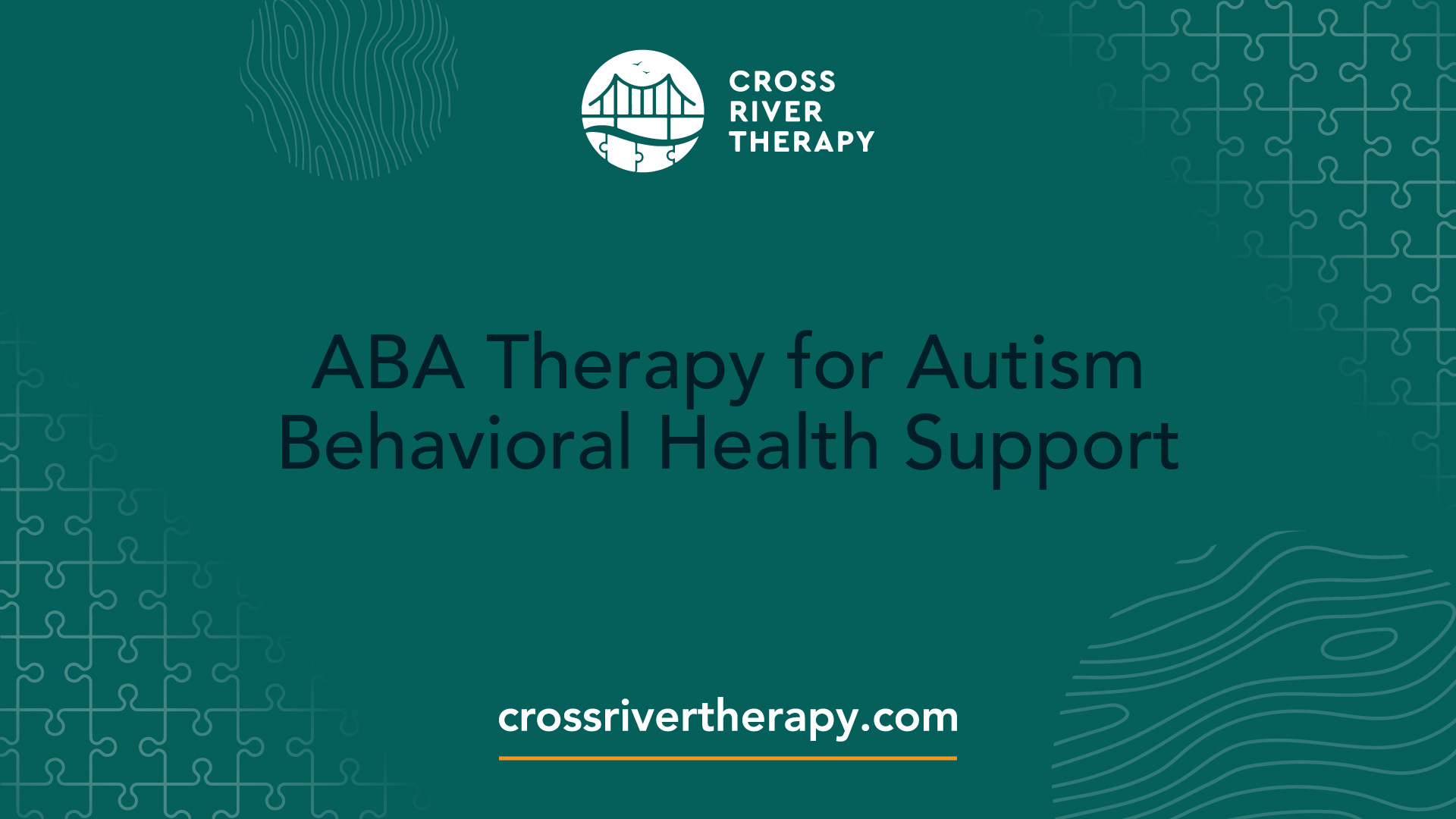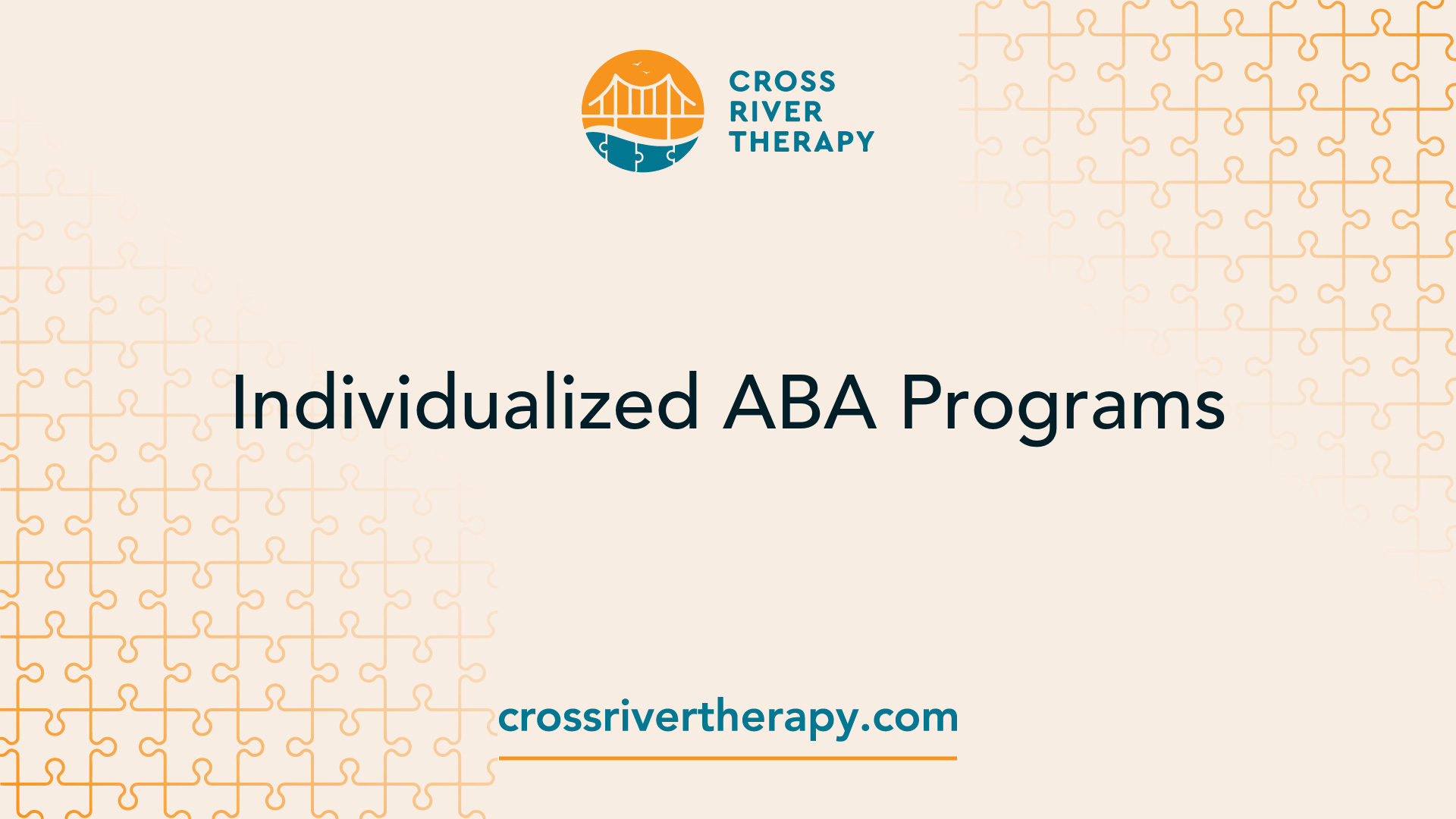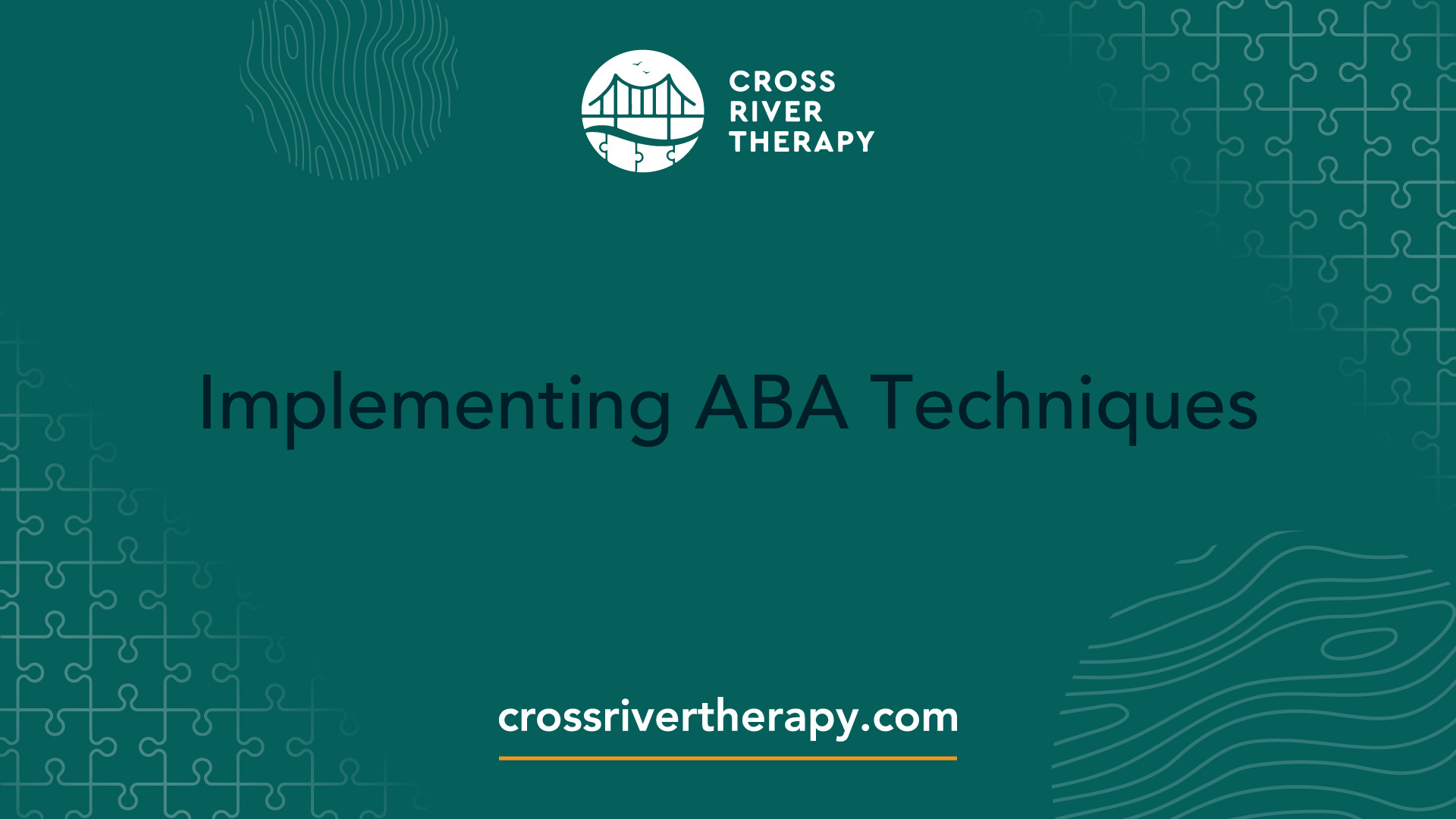ABA Therapy for Autism Behavioral Health Support
Explore ABA therapy for autism behavioral health to boost communication, skills, and support your child’s growth!

Understanding ABA Therapy
ABA therapy, or Applied Behavior Analysis, has proven to be an effective intervention for children diagnosed with autism and related developmental disorders. Its application goes back to the 1960s, when it started transforming how these children received behavioral support.
History and Effectiveness
Over the decades, ABA therapy has gained recognition due to its effectiveness in promoting positive behavioral changes. More than 20 studies have consistently demonstrated that intensive and long-term applications of ABA principles lead to significant improvements in various areas. These improvements include:
Areas of ImprovementDescriptionSocial FunctioningEnhances the child’s ability to interact effectively with peers and adults.Language DevelopmentSupports the growth of communication skills, facilitating speech and comprehension.Daily Living SkillsEquips children with essential self-care skills, promoting independence.Intellectual FunctioningAids in cognitive development, allowing children to engage more fully in learning experiences.
This evidence emphasizes the versatility and adaptability of ABA programs in enhancing children's quality of life.
Role of a Behavior Analyst
A critical figure in implementing ABA therapy is a qualified behavior analyst, often designated as a Board Certified Behavior Analyst (BCBA). This professional is responsible for designing and overseeing personalized ABA programs that fit each child's unique skills, needs, interests, preferences, and family situations.
The behavior analyst conducts assessments to determine the best strategies and techniques tailored for each child. They continuously monitor the child's progress and adjust the program as needed to ensure that the most effective practices are in place. Moreover, behavior analysts also foster collaboration with parents, offering them an active role in their child’s treatment. This partnership allows parents to provide valuable input and feedback, which is essential in tailoring the therapy to meet specific needs [2].
Through the combined efforts of behavior analysts and the family, ABA therapy aims to create a supportive environment that significantly boosts the child’s development and well-being. For additional information about the overall impact of ABA therapy, visit our page on aba therapy for autism behavioral health.
Individualized ABA Programs

ABA therapy is designed to address the unique needs of each child diagnosed with autism. Programs are customized to enhance individual strengths and tackle specific challenges, ensuring that every child receives the most effective support possible.
Tailoring to Specific Needs
One of the fundamental principles of ABA therapy is its adaptability. Each program is tailored to meet the individual needs of learners with autism, focusing on skills that promote independence and success in both the short and long term. According to Autism Speaks, therapists closely assess the particular symptoms of each child, allowing adjustments to be made based on their progress. This personalized approach takes into account areas such as social skills, communication, and other behaviors requiring attention.
Key Components of Individualized ProgramsDescriptionIndividual AssessmentEvaluates the specific challenges and strengths of each child.Goal SettingFocuses on measurable goals tailored to the child’s unique needs.Continuous MonitoringAdjustments are made based on ongoing progress and challenges.
Therapists, under the guidance of a board-certified behavior analyst (BCBA), implement these customized programs, ensuring that the ABA techniques align perfectly with each child's requirements. For more information about how these programs function, visit our article on aba therapy for autism behavioral health.
Focus on Independence
Another vital aspect of individualized ABA programs is their emphasis on fostering independence. By developing essential life skills, children learn to navigate daily activities that may not come as naturally to them. Skills such as using the bathroom, getting dressed, and basic communication are often central focuses of ABA therapy, as highlighted by the Children's Autism Center. This focus on independence not only enhances daily living skills but also builds confidence in the child.
Programs are designed to promote autonomy, helping children progress from needing support to becoming independent in various areas of their lives. The therapists’ goal is to equip these children with the skills they need to succeed both in structured environments, like school, and in more casual settings, such as at home or in the community.
The integration of tailored skills training within ABA therapy leads to meaningful improvements in a child’s overall quality of life. Such personalized focus ensures that each child's journey is unique and reflects their aspirations and capabilities.
Implementing ABA Techniques

Implementing effective techniques is crucial in ABA therapy for children with autism. Two key strategies often utilized are positive reinforcement and behavior modification. These techniques aim to encourage desired behaviors and reduce challenging ones.
Positive Reinforcement
Positive reinforcement is a fundamental strategy within ABA therapy. It encourages positive behavior change by rewarding valued behavior, which leads to meaningful behavior change over time. When a child exhibits a desired behavior, such as following a direction or engaging in social play, they receive a reward, which can be a tangible item, praise, or another meaningful incentive.
This technique operates on the principle that individuals are more likely to repeat a behavior when they receive a reward of personal value for completing a task correctly or achieving a goal [3]. Over time, as the child associates the positive reward with the behavior, it becomes more likely that they will repeat it.
BehaviorRewardFrequency of Behavior (before/after)Following DirectionsSticker3 times/week / 10 times/weekSharing ToysVerbal Praise2 times/week / 7 times/week
Through consistent use of positive reinforcement, children can develop a greater repertoire of functional and socially appropriate behaviors.
Behavior Modification
Behavior modification in ABA therapy focuses on altering challenging behaviors into more functional and appropriate actions. The process involves understanding why a child may be exhibiting certain behaviors and then gradually encouraging a shift toward desirable behaviors [4].
This technique often includes providing clear expectations and consequences. When a child engages in a challenging behavior, behavioral analysts observe and analyze the situation to recreate the setting in which the behavior occurred. Effective interventions aim to replace negative behaviors with positive ones and may include teaching alternative skills or providing social scripts.
Changes are continuously evaluated, and strategies are adjusted based on the child's progress. ABA therapy's adaptability allows for customization to fit the individual needs of children, focusing on specific symptoms that require attention [2].
With effective behavior modification techniques, children learn to manage their actions better, resulting in improved social interactions and everyday skills.
For more detailed information about ABA therapy for autism behavioral health, be sure to explore our other sections.
Benefits of ABA Therapy
ABA therapy provides numerous advantages for children diagnosed with autism. Two significant areas of improvement include socialization and communication skills, as well as life skills and academic progress.
Socialization and Communication
One primary goal of ABA therapy is to enhance communication and social skills. Through structured interventions, children learn the importance of social cues and how to interact more effectively with peers and adults. ABA therapy utilizes techniques that connect behaviors with consequences, helping children distinguish between acceptable and unacceptable social behaviors.
A study highlighted that children receiving intensive ABA therapy for 25 to 40 hours per week over one to three years showed significant improvements in their communication and social skills [3].
Outcome AreasImprovement PercentageCommunication Skills30% - 50%Social Skills40% - 60%
With positive reinforcement and tailored strategies, children develop a better understanding of social interactions, which prepares them for a variety of social settings in schools and family gatherings. This socialization fosters lasting relationships and improved quality of life.
Life Skills and Academic Improvement
ABA therapy also emphasizes the development of essential life skills and academic abilities. Programs are customized based on individual needs, focusing on specific skills such as daily living activities, self-management, and academic tasks.
Research indicates that children involved in intensive, long-term ABA therapy show gains in various academic and life skill areas. Ultimately, these improvements facilitate greater independence and success in school, leading to a better overall outlook for the future.
Skill AreasImprovement PercentageDaily Living Skills35% - 55%Academic Performance25% - 45%
Incorporating ABA therapy into a child's routine can yield remarkable improvements in their life skills and academic performance, aligning with the objectives of ABA therapy for autism behavioral health. By providing children with the tools they need to succeed, parents can foster independence and confidence in their children’s abilities.
Parental Involvement in ABA
Parental participation is a vital component of ABA therapy for children diagnosed with autism. It influences the effectiveness of the therapy and helps in the overall development of the child.
Active Role in Therapy
Parents play an essential role in the ABA therapy process. Their active involvement can significantly enhance the learning and behavioral outcomes for their children. Programs that incorporate consistent parental engagement often see better results in the generalization of skills learned in therapy sessions.
Studies indicate that when parents are involved, children are more likely to reinforce learned behaviors in everyday situations. This active role includes attending training sessions, implementing techniques taught by behavior analysts, and providing feedback about changes observed in their child's behavior both at home and in other settings.
Parental Involvement ActivitiesBenefitsAttending Training SessionsParents learn strategies to implement at home.Practicing SkillsReinforcement of skills outside of therapy increases retention.Providing FeedbackHelps tailor the therapy to meet the child’s evolving needs.
The more engaged parents are, the more opportunity there is for the child to practice new skills in various contexts. Thus, improving the overall efficacy of the therapy. Further insights can be found in our exploration of ABA therapy for autism behavioral health.
Ensuring Generalization of Skills
For children with autism, generalization of skills learned in therapy to other environments is often a challenging aspect of the learning process. Parental involvement is crucial in ensuring that behaviors learned through ABA therapy transfer successfully to the home and community. Skills need to be consistently reinforced to prevent regression during times when a therapist is not present.
A lack of parental involvement can result in children struggling to apply their skills outside therapy sessions, which may slow progress and lead to potential skill regression. Parents can create opportunities for their children to use newly acquired skills in different situations, such as during family outings, playdates, or structured activities at home.
By effectively integrating the use of learned skills in daily routines, parents help their children achieve greater levels of independence and social interaction. This integration is supported by early and intensive ABA interventions that lead to improved outcomes in socialization, communication, and expressive language.
In summary, the active and consistent participation of parents in ABA therapy plays a significant role in enhancing the effectiveness of the interventions, ensuring that children can apply their learned skills across various settings. This not only aids in reinforcing positive behavior but also contributes to the child's overall development and success. For more information on the broader implications of ABA therapy, explore additional resources within the topic of ABA therapy for autism behavioral health.
Concerns and Alternatives
While ABA therapy for autism behavioral health has been widely adopted, there are a number of concerns and criticisms associated with its practices. Understanding these issues can help parents make informed decisions for their children's therapy.
Criticisms and Changes
Concerns have been raised by autism rights and neurodiversity activists regarding ABA-based interventions. These criticisms range from dissatisfaction with historical practices in behavior analysis to current methodologies and objectives.
One focal point for criticism is the perceived intensity of ABA interventions. Some activists question the appropriateness of engaging in up to 40 hours of therapy each week, expressing worries that this might be excessive. Misunderstandings regarding the number of hours participants truly need versus the benefits of early intensive ABA interventions contribute to this skepticism.
Moreover, concerns about the rigidity and formulaic nature of traditional ABA have been voiced. To address these issues, there is a call for more individualized, flexible approaches that adapt to the changing needs of each child. Emphasizing innovation and in-the-moment adjustments can ensure that the therapy is tailored rather than one-size-fits-all.
Alternative Home Therapies
While ABA therapy remains a popular choice, there are alternative home therapies that can complement and enhance the progress achieved through ABA. Some noteworthy options include:
Alternative TherapyDescriptionFloortime TherapyA child-led approach that encourages emotional and social development through playful interactions.Relationship Development Intervention (RDI)Focuses on building social connections and relationships through guided participation.Parent-Child Interaction Therapy (PCIT)A structured program that teaches parents how to manage their child's behavior while improving the parent-child relationship.
These therapies can be beneficial additions to ABA, providing families with diverse tools and strategies to support their children's development. Feasibility studies on in-home ABA therapy indicate compliance rates between 56% and 99%, suggesting that many parents find success in implementing ABA techniques at home. Positive feedback from parents has highlighted the ease of conducting therapy sessions and the joy in witnessing tangible progress in their children.
For families considering different approaches, it is essential to explore all available options and find the best fit for their child's unique needs.
References
[2]:
[3]:
[4]:
[5]:
[6]:
[7]:
[8]:



